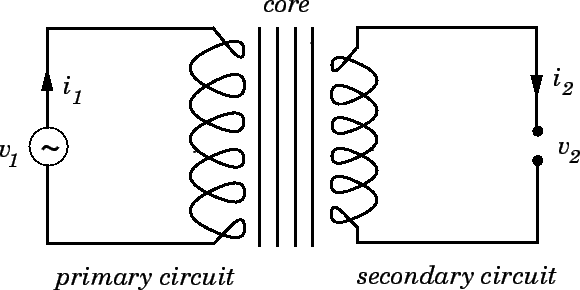Transformer:
On the left we have the primary coil, then a soft iron core and then a secondary coil.
The job of the transformer is to change the size of the voltage of an alternating current.
They do this by having a different number of coils on the primary coil and secondary coil.
When an a.c. current is applied to the primary coil the soft iron core magnetises and demagnetises quickly. This induces a current an a.c. current in the secondary coil.
A step-up transformer has less coils on the primary coil than it does on the secondary so it steps up the voltage.
A step-down transformer has more coils on the primary coil than on the secondary so it steps down the voltage.




